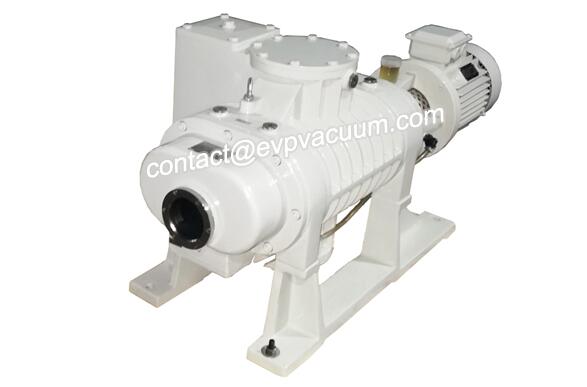Pumps for food processing
General situation of
Food processing is mainly divided into three main processes, namely incoming materials, semi-finished products and finished products. Which each link more or less have the participation of the pump. The type of pump requirements are not the same. For example, chocolate processing needs to be able to transport high viscosity medium pump, wastewater treatment needs wear-resistant, corrosion-resistant pump, pharmaceutical preparation processing needs good corrosion resistance and so on. For different product manufacturers, different stages need different pump material.
Sanitary pump is mainly used for filling, emptying, batching and mixing. In addition, it is used to transfer process fluids from equipment such as membrane filters.
There are two main types of food processing pumps: centrifugal and roots vacuum pumps.
Food processing pumps have been more mature in foreign countries, such as alfalaval, Bominox, EVP, CSF, SPX, Grundfos and so on.
Some relevant standards
Pumps used in the food, beverage and pharmaceutical industries must meet different hygiene standards that define the structural materials and cleanliness of the pumps. Unlike other industrial applications, pumps used in the food and beverage industry must meet strict sanitation regulations.
The 3-a standard is widely enforced in the United States and is recognized internationally.
In Europe, the mechanical supply (safety) code specifies the safety and hygiene requirements for agri-food equipment.
Our country centrifugal sanitary pump standard “QBT 1826-2010 centrifugal sanitary pump”.
Selection of pump materials for food processing
Commonly used is austenitic stainless steel (316L/304), fluoroplastics, ultra-high molecular weight polyethylene, ceramics, glass lining and so on. For pumps with high clean materials (such as distilled water), ultra-low carbon austenitic stainless steel is used for the flow parts.
Food processing pump materials and ordinary materials are different. Because the material used for the pump is not only resistant to corrosion, but also needs not to exude harmful elements/substances or absorb media that may deteriorate.
China has formulated special specifications for rubber products. If “food USES sanitation standard of rubber product”, steel tube material also specified QB2003 to wait a standard. The safety evaluation method is gb17219-1998 or similar.
GB17219 mainly USES immersion method to determine the content of exudate. Standards for materials are not comprehensive. For example, 316L can usually be used in food processing pumps, but if 316L steel plate production is not in accordance with sanitary requirements to produce, it is entirely possible to leak trace amounts of harmful elements. So in GB16798 “food machinery safety and health”, GB12073 “dairy equipment safety and health” regulation shall not be commonly used after welding may rust material, stainless steel should not be toxic, no absorption. Also some manufacturers used FDA, 3A certification.
Food processing pump design, production
There are many types of food processing pumps, which are determined by the diversity of the delivery medium. From clean straight water to milk and jam. These materials are acidic and alkaline. There are those that flow well and those that flow poorly.
The main types of food processing pumps are centrifugal pumps, roots pumps, single screw pumps and peristaltic pumps. Their design method is largely the same as that of ordinary pumps. But not completely the same, here mainly take roots pump as an example to simply illustrate the need to pay attention to a few.
Roots type pump, CAM rotor pump
Roots pump has two rotors, the shape of the rotor is double or three leaves, the rotor turns to the opposite, between the rotor, the rotor and the inner wall of the pump shell have a small gap and no contact.
The rotor of the CAM pump has blades protruding from the hub. According to the number of blades on each rotor, CAM pump has a single blade CAM pump and double blade CAM pump.
Roots pump advantages:
It can be idled for a short time, and the allowable time is determined by the seal.
Self-imbibe;
Solid suspensions can be treated;
Good net positive suction head (NPSH);
Can handle high viscosity fluid (compared with centrifugal pump);
It can be transported in both directions.
The production of the food processing pump should have advanced welding and polishing equipment in addition to the equipment of the common stamping pump.
(The article comes from the Internet. If reprinting is not allowed, please contact our company to delete it.)

